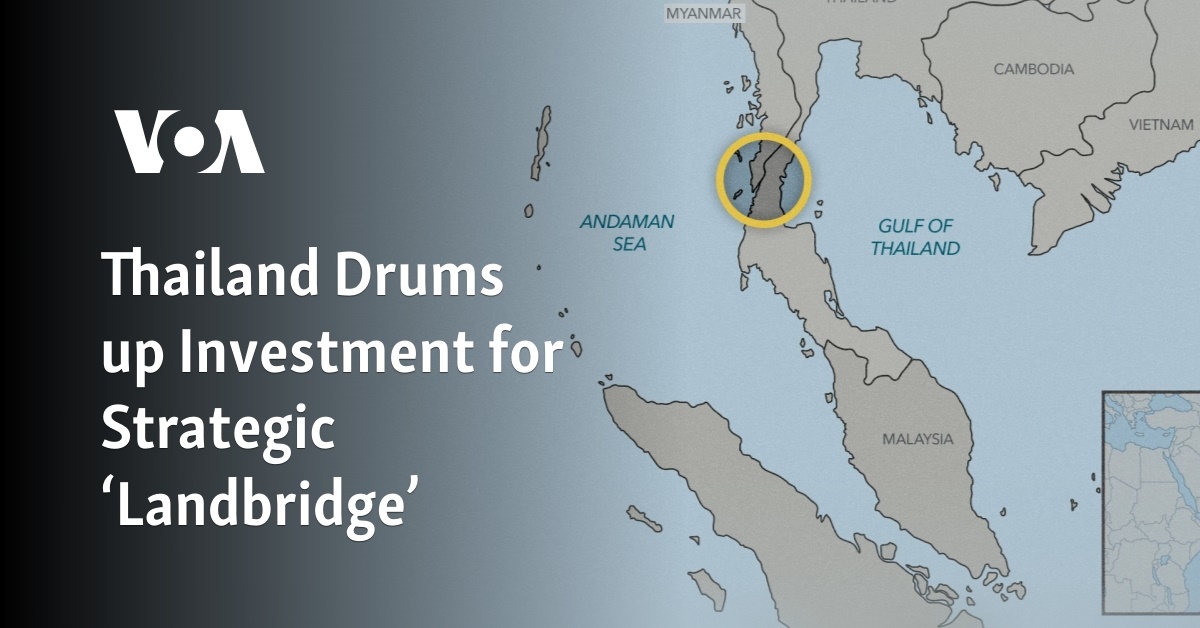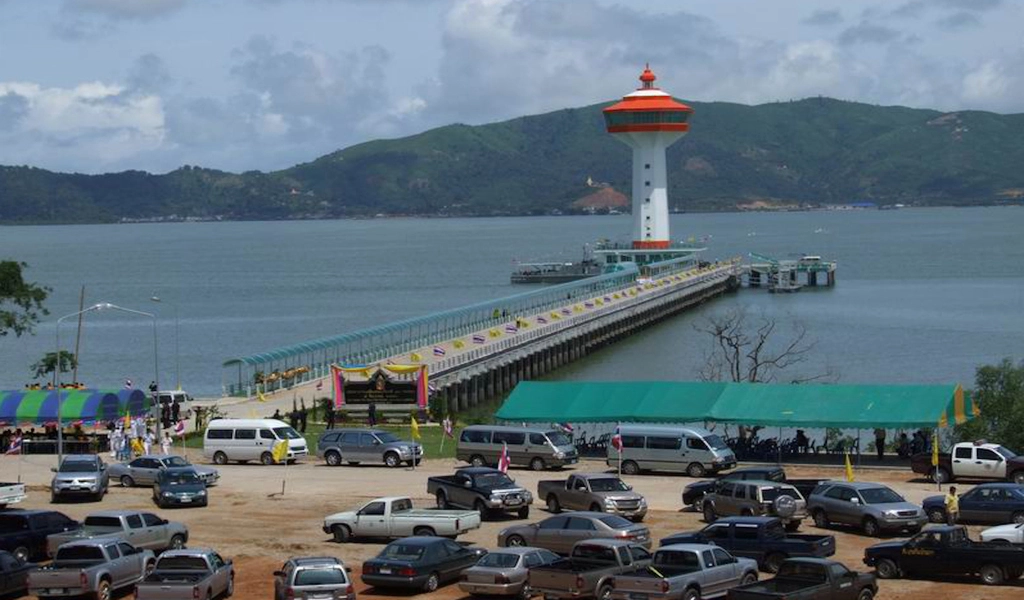(CTN News) – In an effort to attract investors, Thailand is promoting the construction of a “landbridge” across its southern neck. This would shorten the time it takes for cargo to travel from the Pacific to the Indian Ocean and increase Thailand’s strategic importance by giving Chinese trade an alternative route that does not involve Singapore or the Straits of Malacca.
However, the $28 billion plan has detractors, and China has not formally commented. Taking a deep-water route across Thailand similar to the Suez Canal has long been Beijing’s chosen option.
A strategist, China is. Prof. Sompong Putivisutisak of Chulalongkorn University, who has researched the landbridge extensively, stated that the company will not readily reveal its position until it meets with other investors.
According to him, “two reasons that China would invest” (VOA). First, monetary gain, and second, international relations. Although the idea is not economically viable, it could be strategically intriguing if China were to gain control of both seas.
“It’s a matter of how badly it wants that access to both seas,” according to him.
The Thai prime minister, Srettha Thavisin, has promoted the landbridge idea in San Francisco and Beijing. It involves shipping containers to ports on either side of a road and rail line approximately 90 kilometers long.
From Chumpon province on the Gulf of Thailand to Ranong on the Indian Ocean, goods would be transported via high-speed rail and roads across southern Thailand according to the concept. Ships would then be waiting to receive them.
Construction is scheduled to begin in 2030 if the present feasibility study is approved.
Thailand has stated its openness to investment from any source, even those reliant on the existing flow of Middle Eastern oil and consumer products across the Straits of Malacca to China and East Asia.
Reports of possible German interest have appeared in the Bangkok Post and Deutsche Welle. After meeting with Japanese lawmakers and businesspeople about the concept during a recent trip to Japan, Thailand’s prime minister stated, without providing details, that the initiative was receiving interest.
During his speech at the APEC CEO summit in San Francisco on November 15th, Srettha praised the landbridge as a “very important project, not just for Thailand, but for the world.”
He said it would “connect the Pacific Ocean and the Indian Ocean without requiring ships to sail down along the tip of Singapore, known to experience congestion and would cut transport duration.”

Although no specific investors have been announced as of yet, Thai transport minister Suriya Juangroongruangkit has stated that around ten American companies, including e-commerce behemoth Amazon, have shown interest.
As a logistical hub for Asia, Thailand aspires to become a major player. It must provide faster transit times to compete with Singapore, which hosts the busiest transshipment port in the world.
Analysts agree that obtaining support from the United States is crucial if Thailand wants to keep from giving Chinese corporations preferential treatment regarding funding, building, and using the new route.
According to Termsak Chalermpalanupap, a visiting fellow and coordinator of the Thailand Studies Program at Singapore’s ISEAS-Yusof Ishak Institute, “If China indeed supports and invests in the landbridge, China can gain more economic presence in southern Thailand — and this will benefit the Chinese side in the competition with the U.S.”.
“This is why PM Srettha is also trying to sell [it] in San Francisco recently,” he added in an emailed reply.
A long-sought landbridge seems to have put an end to plans for the so-called Kra Canal, an idea that has been mooted for generations: to construct a deep waterway across southern Thailand, akin to the Suez Canal, through which huge ships could travel, so reducing the sailing time over the Straits of Malacca by at least a day.
Cost, possible environmental harm, and the physical partition of the country are among of the reasons why that idea, which has been advocated for years by Chinese lobbying groups in Thailand, has never taken root.
Landbridge vs. Kra Canal: A Shift in Priorities
The then-chief of the Thai army, Prayuth Chan-ocha, established the so-called Thai-China Strategy Research Center after the 2014 coup to investigate the viability of the Kra Canal. A Chinese holding limited business registered in Thailand also supports this center.
Thai officials have instead suggested connecting the land route to the high-speed rail lines already being built in Thailand to Singapore as a component of Beijing’s Belt and Road Initiative.
While in Beijing for a BRI forum in October, Srettha made notes and sketched a preliminary route map, which he later shared online. According to a Thai government official, the project has garnered interest from China Harbour Engineering Co., the country’s leading infrastructure developer.
According to its website, the company already has dredging and port contracts in the country.
If China’s ships cannot use the Straits—a very busy but limited maritime passage across Singaporean, Malaysian, and Indonesian waters—due to conflict or geopolitical tensions, most likely with the United States, the landbridge might provide an alternate route for freight.
Some in Thailand think it won’t be able to handle the volume of goods and military vessels entering the Indian Ocean, and they also think it will be too expensive and won’t have China’s full support.
“It’s nothing short of another dreamy project,” said Somboon Kamhang, chairman of the Coordinating Committee on Development, a group that supports community development and has, for a long time, researched plans for trade routes in the south.
The landbridge project does not interest China. “Constructing a landbridge would be an extremely expensive and labor-intensive undertaking, but China could support the canal proposal, giving it greater regional influence,” he told VOA.
As a central tenet of a development plan implemented over 20 years ago by Prayuth’s administration—a few of whose close associates are now in Srettha’s cabinet—the domestic political motivation for turning Thailand into a logistics powerhouse is also strong.
One worry is that in the haste to sell Thailand’s connection, the country could wind up with a costly “white elephant” project that fails to meet the needs of either China or the US.
“Thailand needs to be able to read the game. Otherwise, it’s setting itself up for failure,” said Somboon.






